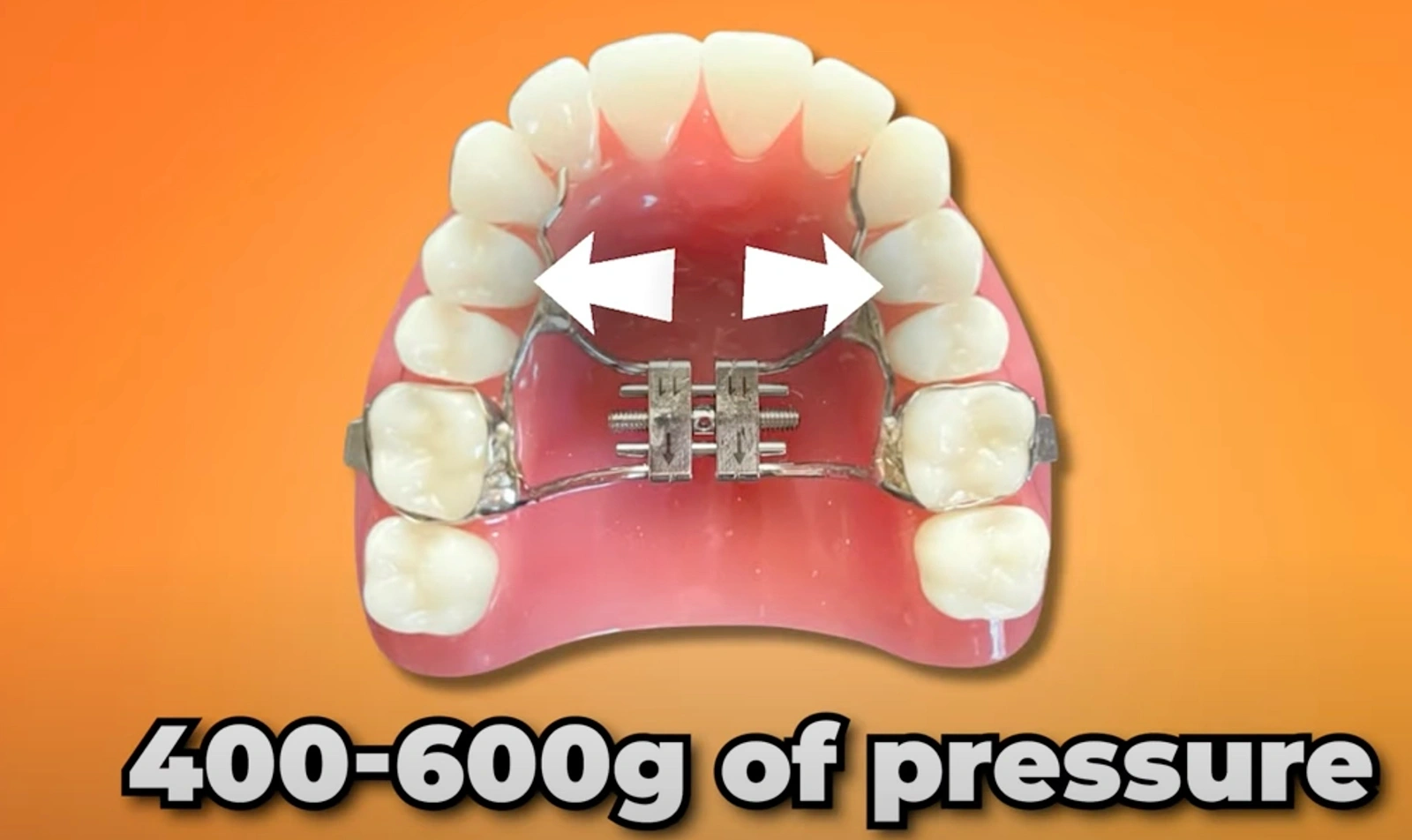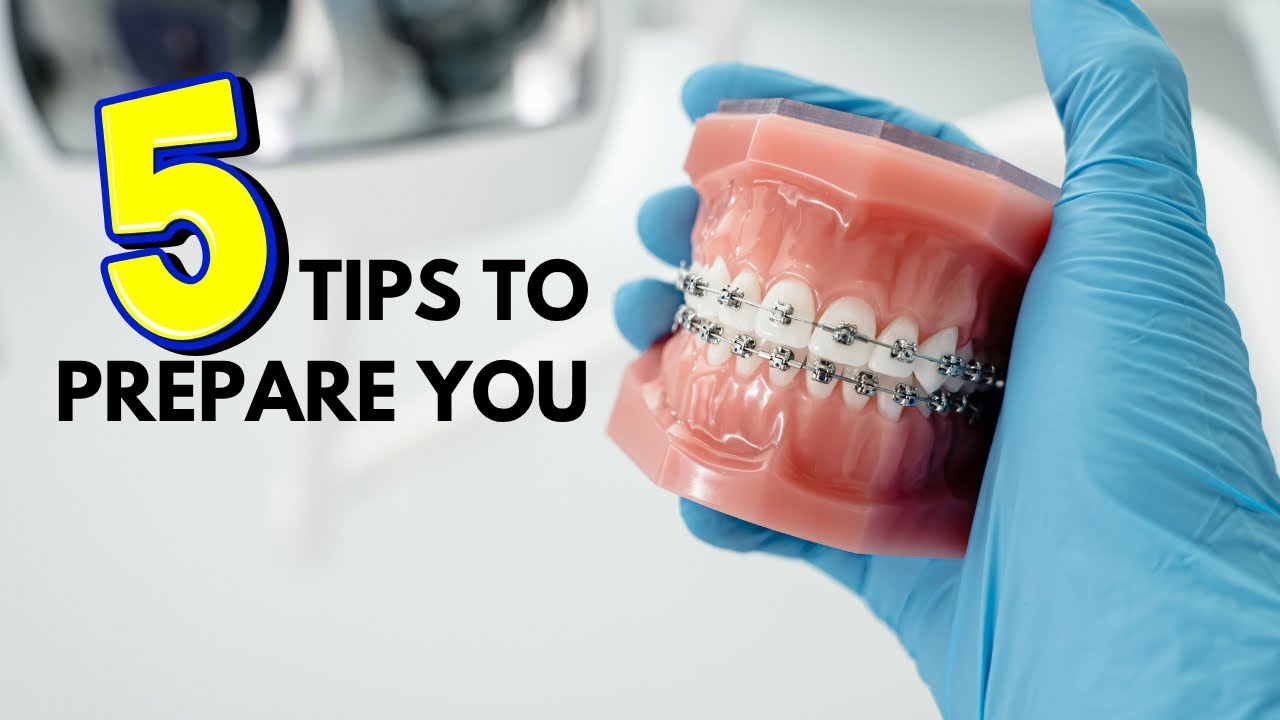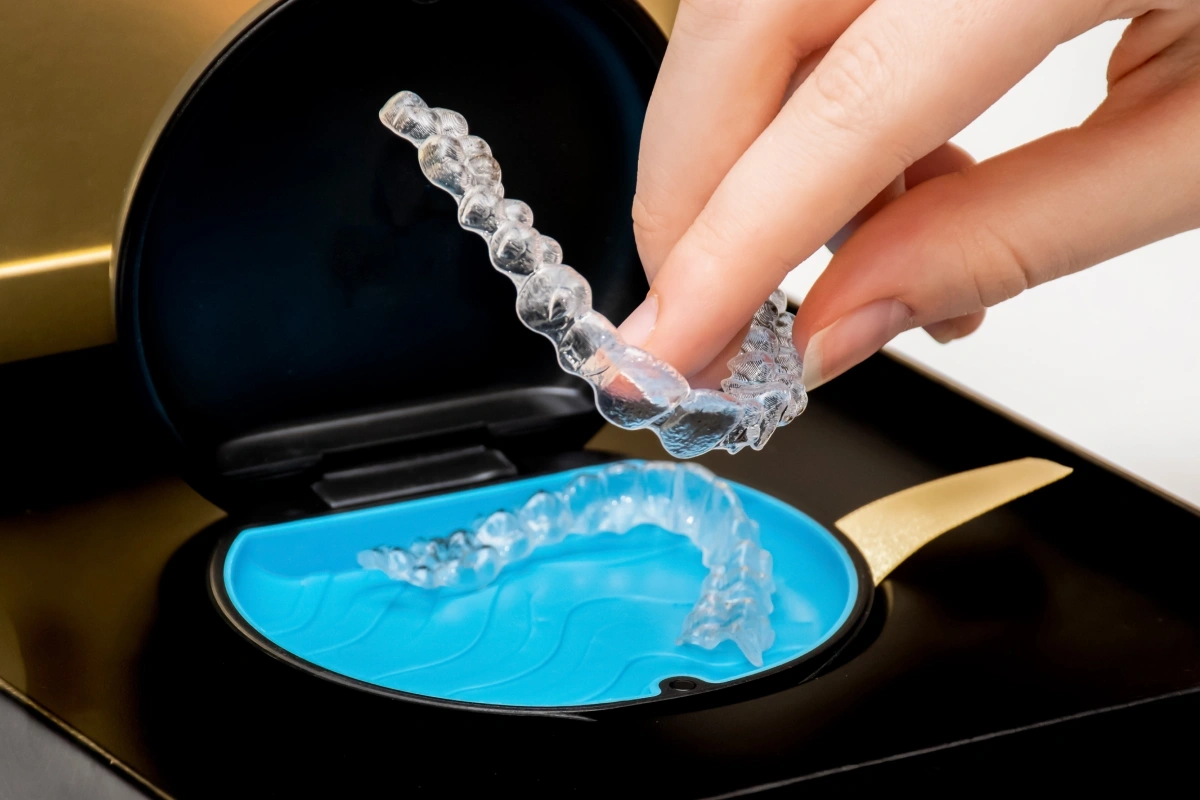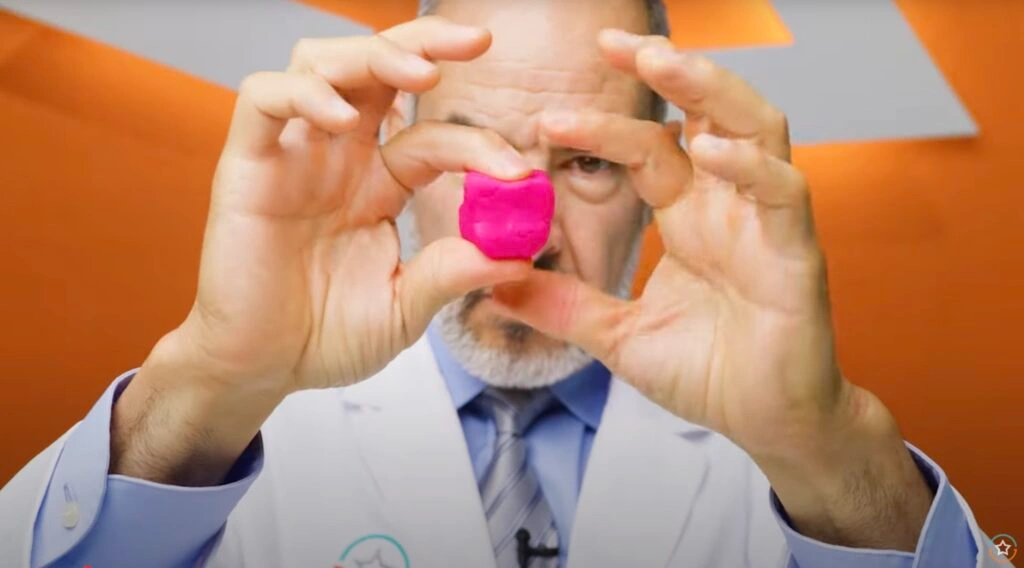
There are still so many outdated beliefs floating around about braces. I’m going to bust 5 myths that might be keeping your child in braces longer than necessary… or worse, in the wrong treatment altogether. Let’s dive in.
We are gonna kick off this list with the BIG one,
MYTH #5: “You should wait until all the adult teeth come in to get braces.”
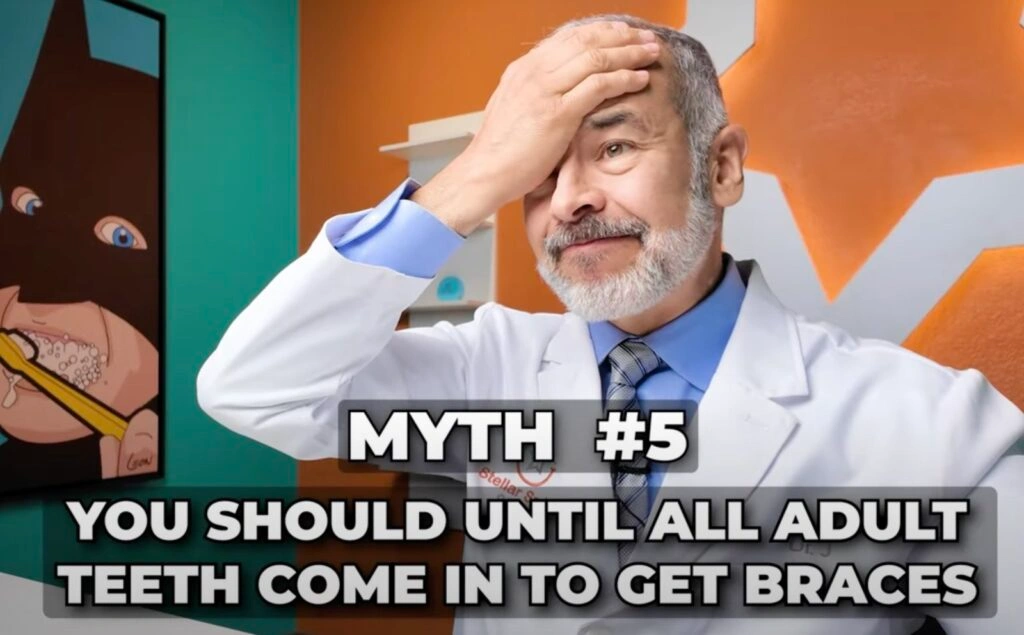
What surprises me more than anything is that even dentists believe this myth!
But the ramifications of this belief could be disastrous for your kids and cost thousands of dollars, extractions, and even surgery to fix. It’s like saying, “Don’t fix the foundation of your house until the roof starts leaking.” Here’s the truth: Ages 6 to 9 are the golden window for early intervention.
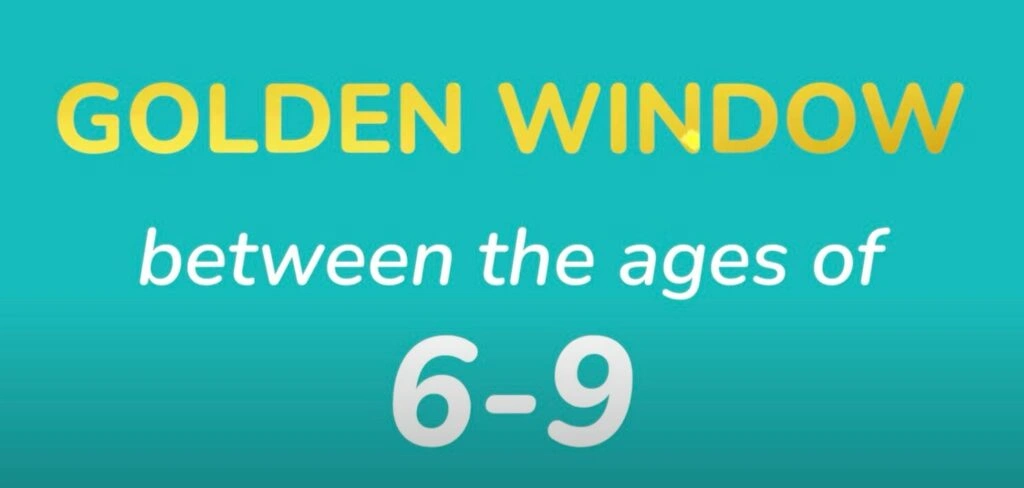
Why? Because their jaws are still soft and flexible—like Play-Doh.

About 90% of people in the US will have some form of teeth crowding. This is because 90% of people develop a narrow palette. This development is happening during the time that baby teeth are being pushed out by adult teeth, and the jawbone is being molded in that 6-9 age range. Once all the adult teeth come in, the child’s development hits a different stage where the jawbone becomes hard. So, all the issues are now locked in.
If we start treatment early, we can guide the growth of their jaw, make room for adult teeth, and often avoid stuff like painful expanders, extractions, and jaw surgery later on.
“Too Late” cases:
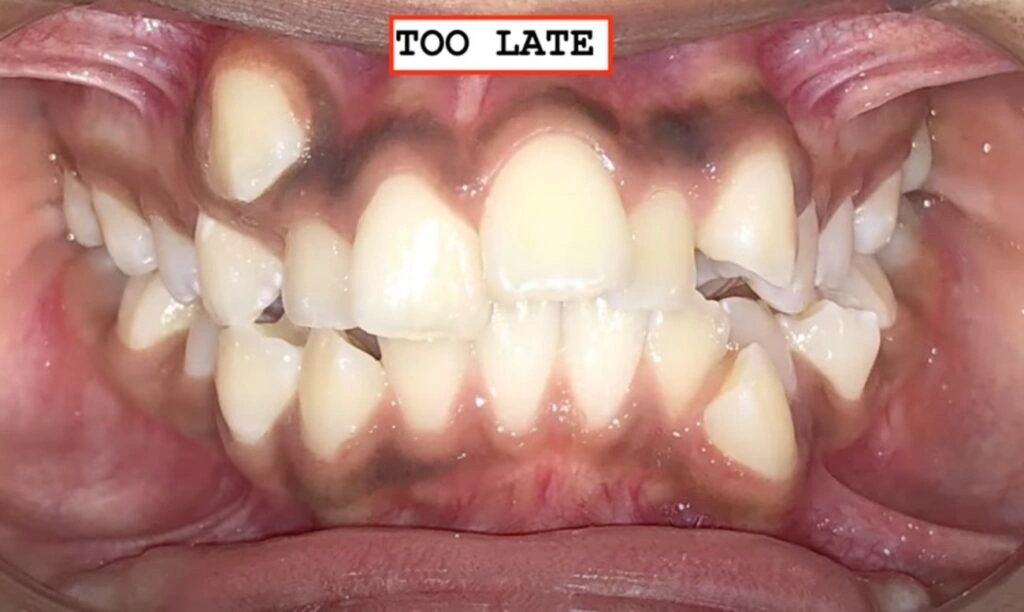
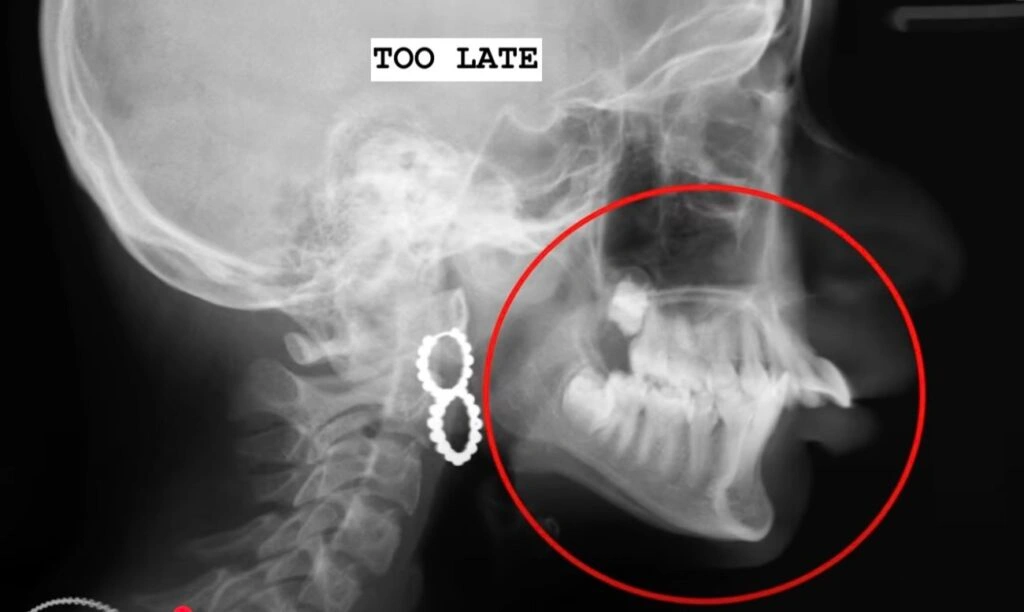
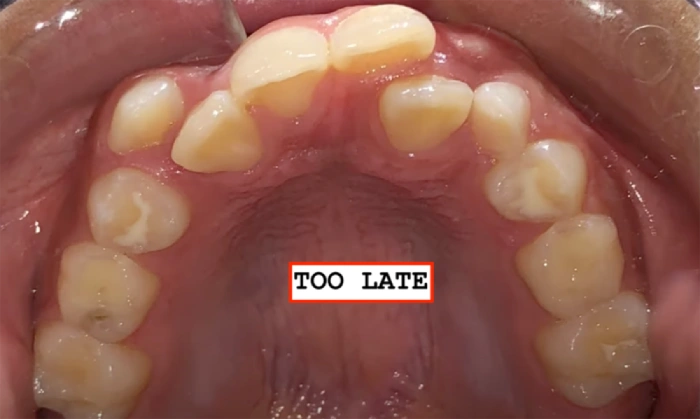
Patience may be a virtue… but in this case, waiting can cost you time, money, and comfort. The early bird doesn’t just get the worm—he gets out of braces months sooner. So, bring your child to an orthodontist between 6 and 9, and your future self will thank you.
MYTH #4: “Braces are the only option.”
This one’s basically like still using a VHS player when you were growing up. Your siblings never rewound the Land Before Time VHS before putting it away, so now you were stuck enduring the agonizing ordeal of listening to the hum of the machine till it finally made that click sound, signaling that you could finally watch the movie.

Jokes aside, Braces are like using a VHS player in the streaming age. It works, but because of innovation, you can skip the wasted time of the “old way” and get right to it!
Invisalign First for kids ages 6-9 is the streaming of ortho—No metal, no brackets, no emergency wire pokes from biting into a chicken nugget the wrong way.
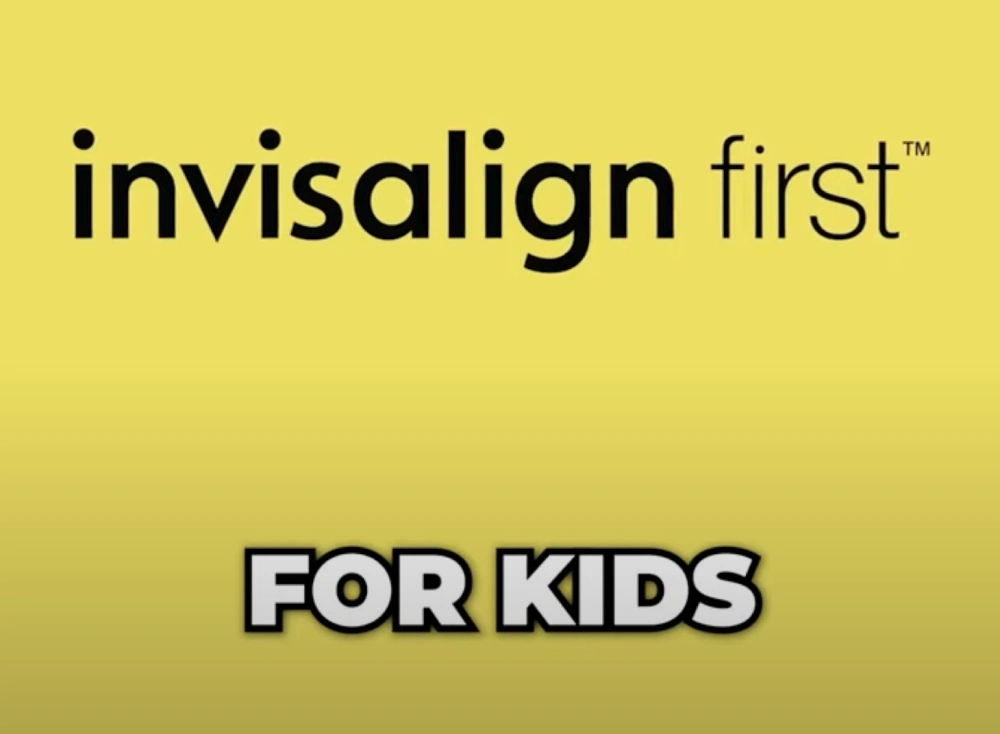
And here’s the kicker—it usually takes just 6 to 8 months, instead of the traditional 18 to 24.
Myth #3: “Braces are just for looks.”
This is a lot like thinking glasses are just a fashion accessory. Tell that to the guy squinting at road signs like they’re ancient hieroglyphics.
Look, I get it—straight teeth look great. But this isn’t about turning your 8-year-old into a future toothpaste model. The most important thing for anyone’s teeth is their function.
Crooked teeth and bite issues don’t just mess with yearbook photos. They can affect how your kid chews, speaks, breathes, even how their jawline develops. We’re not just lining up teeth—we’re guiding how their face grows. Yes… their actual face.
Think of it like this: at age 7, your child’s jaw is basically Jell-O with a purpose.
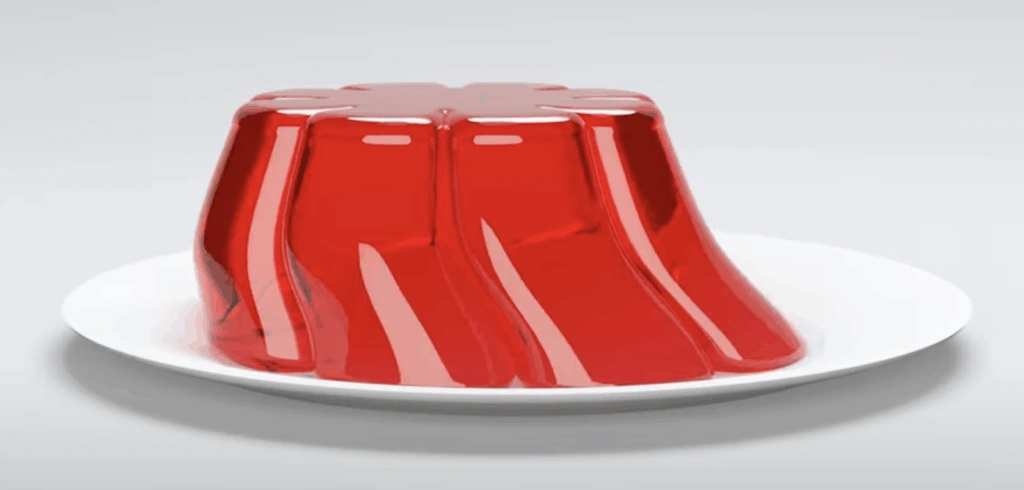
We can gently guide it into the right shape—or wait until it hardens into concrete and needs a jackhammer. When we intervene early, we often avoid the horror stories—headgear, tooth extractions, or three years of metal braces in middle school.
So yeah, straight teeth are nice… But breathing better, chewing properly, and not needing surgery later? That’s the real glow-up.
MYTH #2: “You’ll know when your kid needs braces by just looking at their teeth.”
That’s like judging how healthy a car is just by looking at the paint job. Sure—it’s shiny. But that doesn’t tell you anything about the engine, alignment, or whether the brakes are screaming for help.
It’s the same with your kid’s smile. Even if the teeth look straight, they could still have hidden bite issues—like a crossbite, overbite, or a jaw that’s not growing quite right. And the thing is, these problems don’t always announce themselves with flashing lights and warning sounds.

Think of it like checking your house for termites. You could wait until the floor caves in… but wouldn’t it be better to take a peek while everything still looks okay? And when we do find something early, we can usually fix it with less effort, less time, and fewer tears—and often without braces at all.
So, if you’ve looked at your kid’s smile and thought: “Eh, they seem fine…”—remember, so did that house on HGTV right before they opened the walls.
 MYTH #1: “Only braces will work—my kid will forget to wear Invisalign or lose it.”
MYTH #1: “Only braces will work—my kid will forget to wear Invisalign or lose it.”
Dr. J (smiling knowingly):
Ah yes… the classic “My kid can’t even find their shoes, how are they gonna keep track of clear aligners?” myth.
Look, I get it. You’re worried your kid might lose the aligners, forget to wear them, or treat them like Pokémon cards. But here’s what I’ve seen after 25 years of treating kids: Ages 6 to 9 are actually the sweet spot for aligner compliance.
Why? Because at that age, kids are just starting to understand cause and effect.
You tell them,
“Wear these trays, and your teeth get better and you will earn a beautiful smile.”
They believe you—and they do it.
They haven’t hit that eye-rolly, “Why should I?” stage yet. They still trust parents, teachers, coaches—and yes, orthodontists.
Now let’s talk about the real win here—
Who is Invisalign First actually better for?
Surprise… it’s you, the parent.
Let’s compare:
Braces Life:
- Broken wires? Emergency appointment.
- Hard to brush well? Welcome to cavities, costing more money to fix.
- No popcorn. No gum. No hard candy.
- School photos? Full-metal grin.
- More appointments
Invisalign First Life:
- No wires. No brackets. No poking.
- Pops out to eat, brush, floss—easier hygiene, fewer problems.
- Less time in the chair. Fewer appointments.
- Cuts treatment time by over HALF
- And is virtually painless!
And your child?
No restrictions. No embarrassment. Just a smooth, comfortable way to fix their smile—without disrupting their childhood.
And I get the hesitation.
But if you think braces are the “safe” or “guaranteed” option just because they’re stuck to the teeth—think again. When it comes to early intervention, Invisalign First is often the more predictable, comfortable, and compliant choice.
I made a free comparison guide—Braces vs. Invisalign First for Kids—to help you see the full picture. Check the link below and download it, and see what’s possible for your child between ages 6 and 9.
You might be shocked at how easy this can actually be.
Want to see and hear more?
For a more interactive experience, check out the live YouTube version of this blog, where we dive deeper into the topic and share expert insights. Click the link below to watch the full video!
Don’t wait! Early Treatment to intercept these problems can mean the difference between a simple pain-free solution and years of complicated, costly and painful treatments later on.
FAITH
REMEMBER TO THANK GOD FOR EVERYTHING! We should live lives of thanksgiving all the time. Even the disappointments. Thank you Jesus: I know that you have a reason for this and I will trust you..

